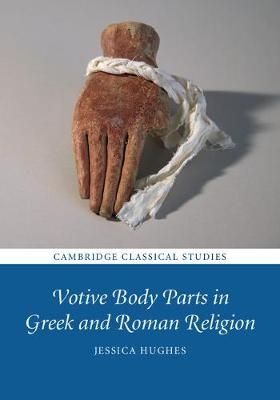
Votive Body Parts in Greek and Roman Religion
Seiten
2017
Cambridge University Press (Verlag)
978-1-107-15783-5 (ISBN)
Cambridge University Press (Verlag)
978-1-107-15783-5 (ISBN)
This book examines a type of object that was widespread and very popular in classical antiquity - votive offerings in the shape of parts of the human body, using them to explore how beliefs about the body changed throughout the period. Of interest to scholars and students of classics as well as religious studies.
This book examines a type of object that was widespread and very popular in classical antiquity - votive offerings in the shape of parts of the human body. It collects examples from four principal areas and time periods: Classical Greece, pre-Roman Italy, Roman Gaul and Roman Asia Minor. It uses a compare-and-contrast methodology to highlight differences between these sets of votives, exploring the implications for our understandings of how beliefs about the body changed across classical antiquity. The book also looks at how far these ancient beliefs overlap with, or differ from, modern ideas about the body and its physical and conceptual boundaries. Central themes of the book include illness and healing, bodily fragmentation, human-animal hybridity, transmission and reception of traditions, and the mechanics of personal transformation in religious rituals.
This book examines a type of object that was widespread and very popular in classical antiquity - votive offerings in the shape of parts of the human body. It collects examples from four principal areas and time periods: Classical Greece, pre-Roman Italy, Roman Gaul and Roman Asia Minor. It uses a compare-and-contrast methodology to highlight differences between these sets of votives, exploring the implications for our understandings of how beliefs about the body changed across classical antiquity. The book also looks at how far these ancient beliefs overlap with, or differ from, modern ideas about the body and its physical and conceptual boundaries. Central themes of the book include illness and healing, bodily fragmentation, human-animal hybridity, transmission and reception of traditions, and the mechanics of personal transformation in religious rituals.
Jessica Hughes is a Lecturer in Classical Studies at The Open University, Milton Keynes. She has an MA and PhD in Art History and most of her subsequent research has focused on Greco-Roman art and its reception in later periods.
1. Introduction: fragments of history; 2. Fragmentation as metaphor: anatomical votives in Classical Greece, fifth-fourth centuries BC; 3. Under the skin: anatomical votives in Republican Italy, fourth-first centuries BC; 4. The anxiety of influence: anatomical votives in Roman Gaul, first century BC-first century AD; 5. Punishing bodies: the Lydian and Phrygian 'propitiatory' stelai, second-third centuries AD; Afterword: revisiting fragmentation.
| Erscheinungsdatum | 02.04.2017 |
|---|---|
| Reihe/Serie | Cambridge Classical Studies |
| Zusatzinfo | 84 Halftones, black and white |
| Verlagsort | Cambridge |
| Sprache | englisch |
| Maße | 179 x 254 mm |
| Gewicht | 650 g |
| Themenwelt | Geschichte ► Allgemeine Geschichte ► Vor- und Frühgeschichte |
| Geschichte ► Allgemeine Geschichte ► Altertum / Antike | |
| Geschichte ► Teilgebiete der Geschichte ► Kulturgeschichte | |
| Geschichte ► Teilgebiete der Geschichte ► Religionsgeschichte | |
| ISBN-10 | 1-107-15783-8 / 1107157838 |
| ISBN-13 | 978-1-107-15783-5 / 9781107157835 |
| Zustand | Neuware |
| Haben Sie eine Frage zum Produkt? |
Mehr entdecken
aus dem Bereich
aus dem Bereich
auf den Spuren der frühen Zivilisationen
Buch | Hardcover (2023)
C.H.Beck (Verlag)
20,00 €
Konzepte – Methoden – Theorien
Buch | Softcover (2024)
UTB (Verlag)
39,90 €
Was Pompeji über uns erzählt
Buch | Hardcover (2023)
Propyläen (Verlag)
32,00 €


